East Alberta
If you travel on safari in East Africa, you are likely to encounter ferocious beasts in the wild. Leopards, lions, and elephants are fascinating, but if you want to experience much larger and far more dangerous predators, you should consider East Alberta.
Bear and I, about to set out on safari.
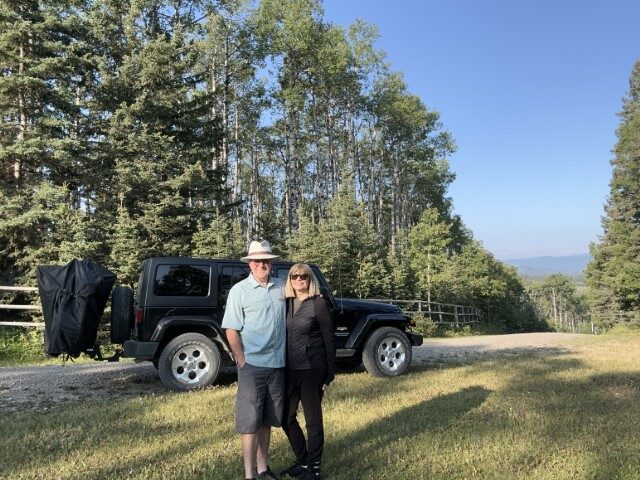
We packed a lunch and filled the Jeep’s tank with dinosaurs, a.k.a. gasoline. Petroleum is fossilized organic material – 200-million-year-old zooplankton and dead Tyrannosaurus Rex – so our first encounter with a prehistoric beast happened at Fas Gas.
Massive creatures continued to cross our path as we drove eastward, big squishy grasshoppers made a mess of the Jeep’s grill and windshield. Before we reached Highway 2, our view was littered with locusts.
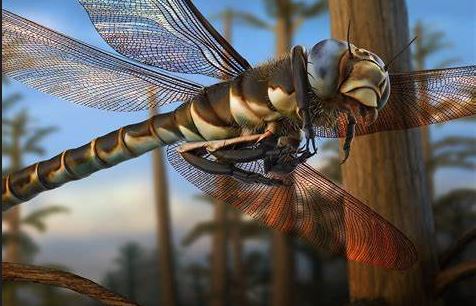
But we are fortunate, had we driven through here 75 million years ago, we might have had dragonflies with raven-sized wing spans splattered on our window.
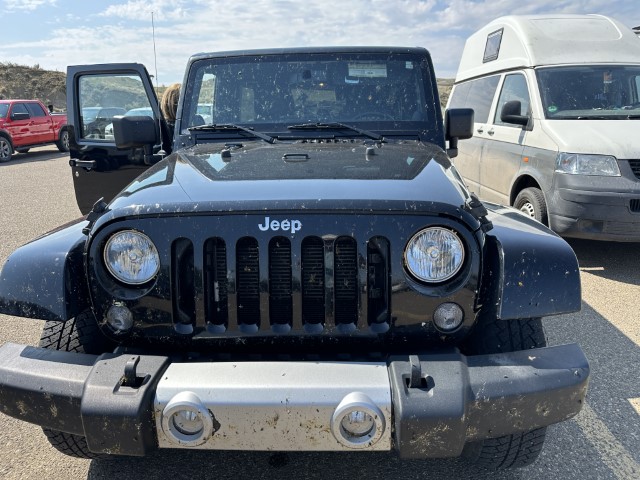
We left the Trans-Canada highway at Bassano and picked our way along secondary roads to our destination, Dinosaur Provincial Park.
The badlands that encompass the Park have produced 5% of the world’s fossilized dinosaur species. Bear and I hope to encounter a few on our safari field trip.
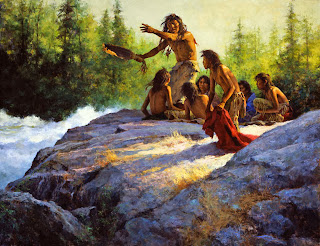
The native people of southern Alberta were the first to discover dinosaur fossils. They considered the badlands a graveyard for giants and revered it as sacred ground.
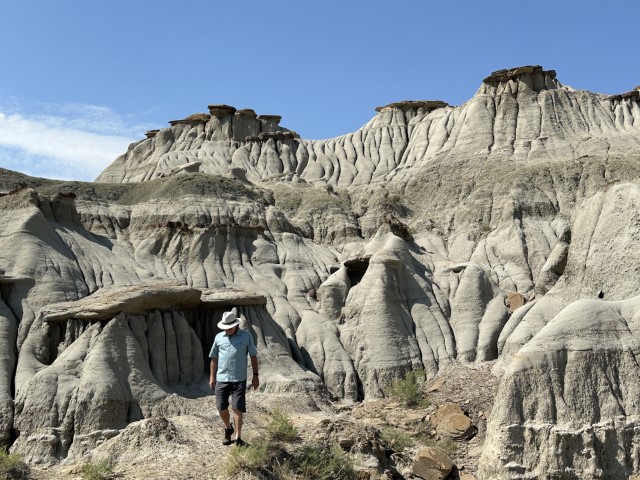
Badlands is a misnomer. You might encounter a lusher environment on an African safari, but this sculptured terrain has a beauty of its own.
This juvenile Gorgosaurus was having a snack just inside the Interpretive Centre as we arrived. The 75-million-year-old predecessor of T-Rex had an estimated adult weight of about 10,000 lbs.
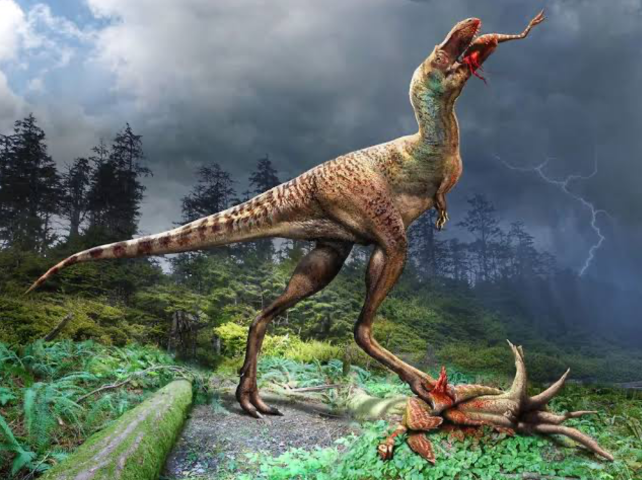
As with many teenagers, Gorgo had a voracious appetite.
Gorgosaurus was dining on the drumsticks of a Citipes elegans, a smaller fleet-footed herbivore.
Paleontologists know this because fossilized leg bones of Citipes were found in the stomach of the larger Gorgosaurus fossil.
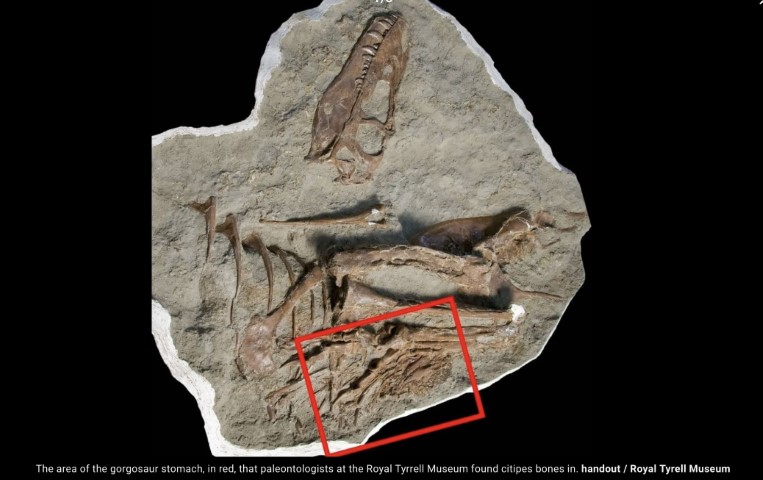
Our next encounter was with Alberta Lizard. Three quarters of known Albertosaurus fossils have been found in outcroppings on the banks of the Red Deer River. The large bipedal dinosaurs hunted in packs.
We were very fortunate to capture this photograph of Alberta’s namesake reptile, as they hunted in the coulees of Dinosaur Provincial Park.
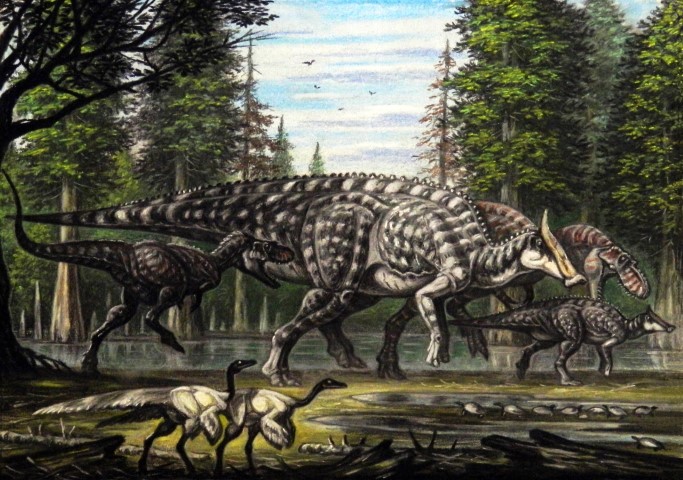
The horns and head frill of the Chasmosaurus are problematic for paleontologists. Chasmosaurus was a docile herbivore, with no need of offensive armaments. Scientists speculate that the short horns and spectacular, but flimsy head frill would not have provided much protection. The facial attributes of Chasmosaurus might have given the appearance of size and strength, thereby deterring potential predators.
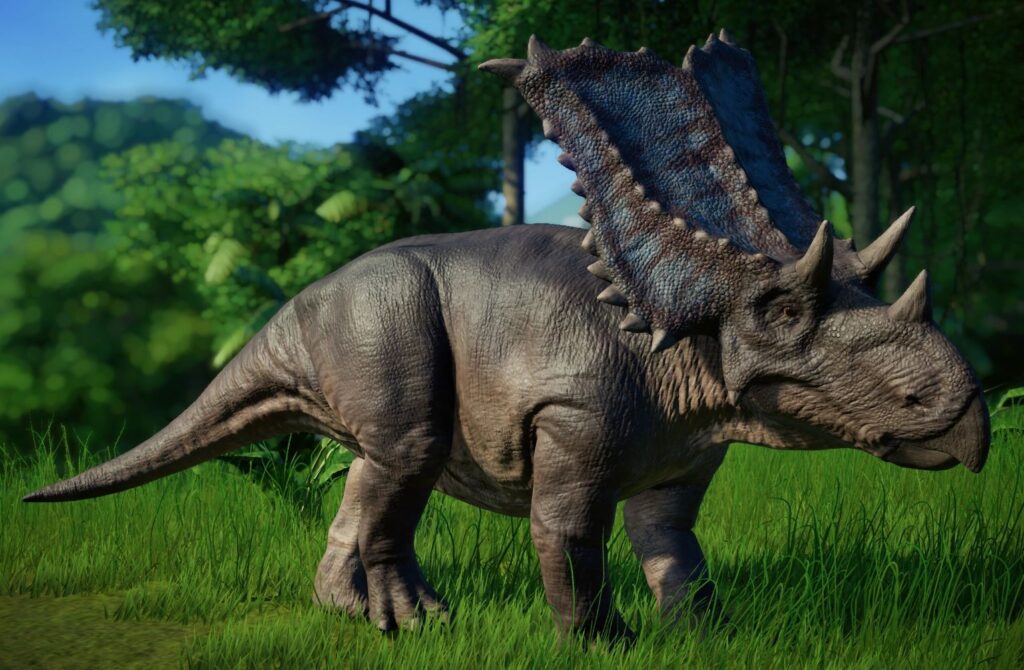
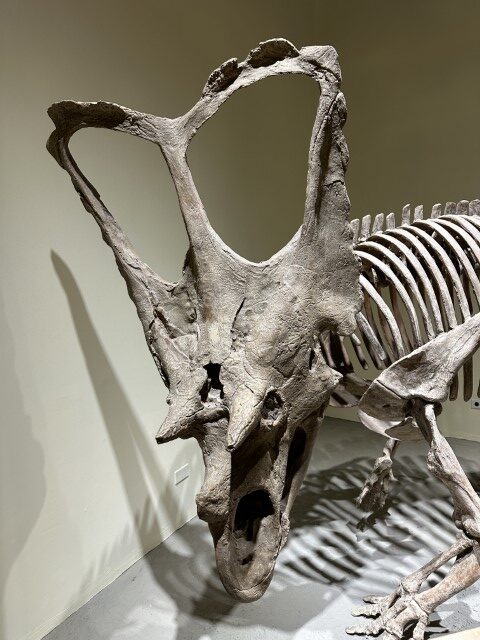
Chasmosaurus’ armaments, ornamental or not, worked on us. When we saw this big guy headed our way, we opted for the safety of higher ground.
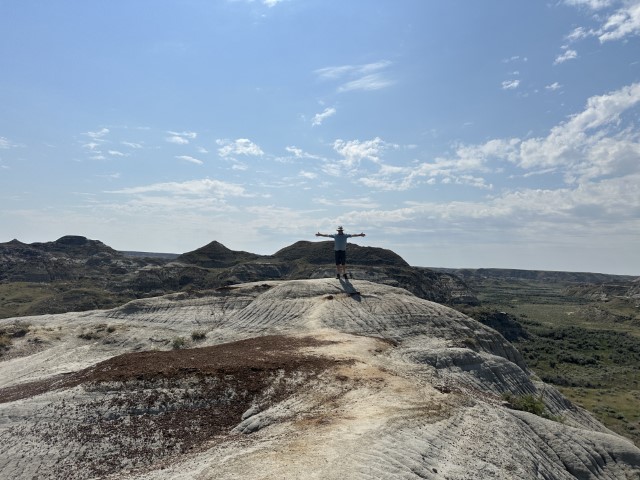
Our Alberta safari lasted until the sun started to drift behind the hoodoos. Faced with the prospect of being in the dark with the most ferocious monsters the world has ever known, we turned the Jeep around and headed home.
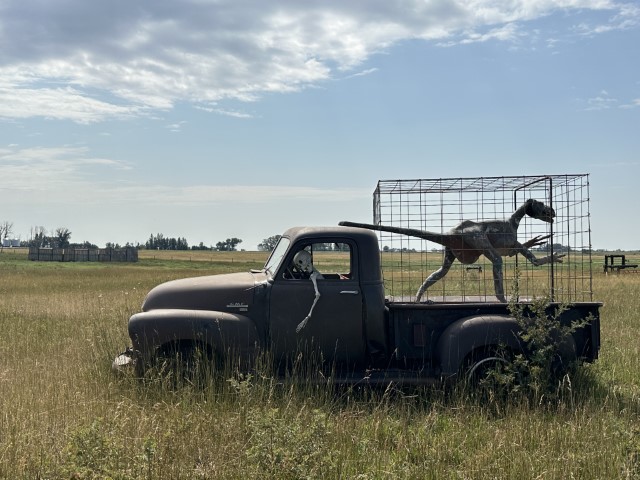
Another aspiring paleontologist wasn’t so lucky. He lingered too long taking specimens, with dire consequences.
An unfortunate victim of an …
… Alberta Safari.


Gervais
Nice piece about our local megafauna. Did you look in the mirror too? 😉
Russ Paton
Tyrannosaurus-Russ, you’re saying?